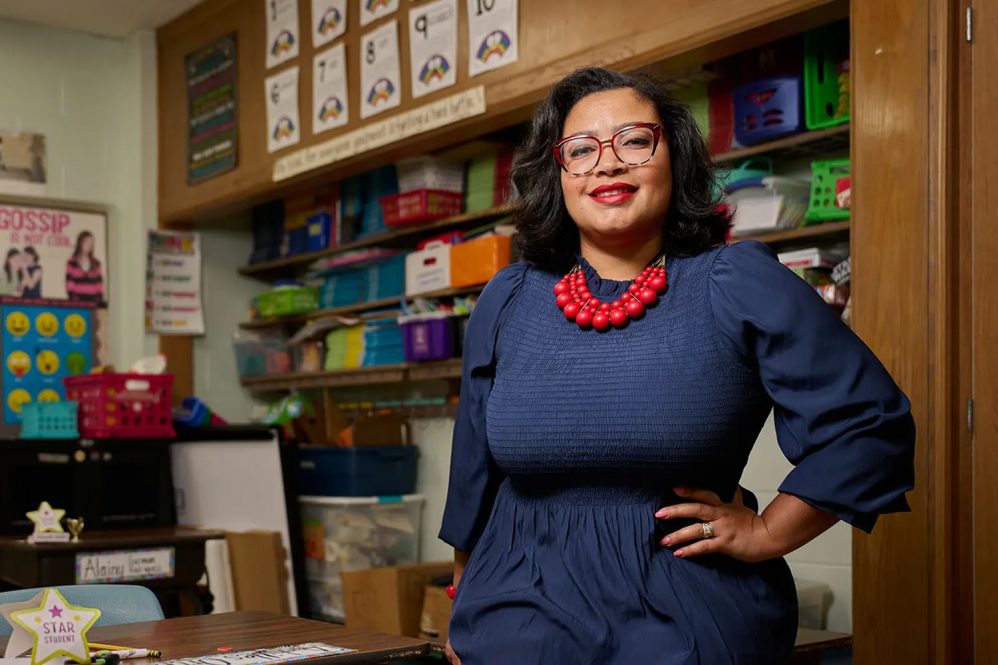Who is the “public” in “public education”? Future teachers in this class tease apart that question, using history and current events to examine the inequities in our educational systems and to posit real-world fixes.
The Instructor:
At just 4 years old, Violet Jiménez Sims ’02 (SFA), ’05 MA, ’11 6th Year told her mother she wanted to “be one of the little people that lived inside the television.” Today, she laughs and says she’s learned that no one lives inside a TV, and instead of being an actress, she spends most of her time in front of a different audience: college students.
“Good teachers have to be good actors,” Sims says. “You have to be entertaining enough to capture students’ attention and use improv skills sometimes when things don’t go right.”
Her path took a turn from fine arts to education during her senior year at UConn, when she was homecoming royalty representing the Puerto Rican/Latin American Cultural Center. “As part of that process I met a lot of people on campus,” she says. “One thing led to another, and there was an opportunity in the Dean of Students’ office.” Sims took the role and quickly knew she was on to something: She liked working with students. After earning her master’s, she taught Spanish and ESL (English as a Second Language) at Connecticut public high schools in New Britain and Manchester before becoming an administrator at a Montessori magnet school in Hartford.
“There was nothing else I had done before that seemed so impactful to individuals,” she says of teaching.
Now an assistant clinical professor in the Neag School of Education, Sims teaches “Power, Privilege, and Public Education” as a way to remedy an issue she saw frequently in public schools. “Equity work, diversity and inclusion — there were a lot of people in the field who just did not have any training connected to that,” Sims says.
Filling that gap when teachers are already leading a classroom is “almost a little too late,” she says, and that’s why she wants to help train students from the beginning.
Class Description:
“We talk about educational equity and justice — the historical, social, cultural, philosophical, and legal frameworks of education — and connect it to current events,” Sims says.
Categorized as both a general education and service learning course, it gives students an introduction into schooling in America while encouraging them to go out and experience it firsthand. By the end of the course, students pick an education topic to center an advocacy project around.
But first, students must understand the development and structure of education. As with most courses, there’s plenty of assigned readings, podcasts, and guest speakers. But many points are driven home through reflection exercises. One early assignment asks students to evaluate their own K-12 education in a five-page narrative. Students are often left surprised, Sims says. They’ll pinpoint things like dress codes, school demographics, and teachers, evaluating how those may have positively or negatively impacted their own education and how they see the world today. “This work is a journey, not a destination. If you’re into social justice work and you want to make sure that you’re having an impact, you are constantly learning about it,” she says. “And in order to actually be good at it, you have to be extremely reflective at all times.”



